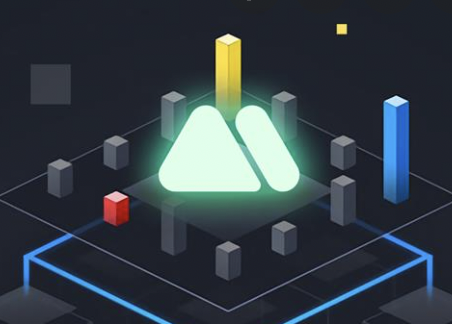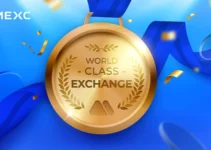What’s next after the Web 1.0 and Web 2.0 era? With the monopoly of the current Web 2.0 run by Internet Technology giants such as Meta, Amazon and Alphabet, comes concerns of privacy and the need for a more open, fair, secure and decentralized network. This is where blockchain technology and Web 3.0 come in.

History of Web 3.0
In 2014, Dr. Gavin Wood proposed a revolutionary vision for Web 3.0. He posited Web 3.0 as a broad set of movements and protocols to make the Internet more decentralized, verifiable, and secure; to achieve a serverless, decentralized Internet where users control their own identity, data, and destiny. Web 3.0 would start a new global digital economic system, create new business models and new markets, break platform monopoly, and drive extensive bottom-up innovation.

Kevin Carey’s “Out of Control” has a vivid description “no beginning, no end, no center. Or, all beginning, all end, pure center.” The same sentence applies. In the world of Web 3.0 – no server, no center, or conversely, there are servers everywhere and centers everywhere.
The origin of Web 3.0
Web 1.0
In the 1990s users were still only able to passively browse content online, i.e. whatever the website offered the user, without any interaction, as in the case of portals such as Google and Yahoo. We refer to this as the Web 1.0 period, when users were passively fed information from websites. The model is platform creation, platform ownership, platform control and platform benefit.
Web 2.0
With the development of the Internet and arrival of Web 2.0 in 2004, dialogical communication was enabled, allowing users to generate content independently, interact and collaborate with others on websites such as Facebook, blogs and other social media platforms. This model is a user-centric read-write Internet.
Web 3.0
The current state of Web 2.0 is gradually showing its drawbacks: it is becoming more and more centralized, with data security and privacy protection issues becoming more acute from incidents such as the Facebook user data breach a few years ago. The emergence of Web3.0 is to solve these problems and lead us to a more “efficient, fair, credible and valuable” Internet. Here, digital identities, assets and data return to individuals and become more decentralized. The Internet of Decentralized Value. model is user-created, user-owned, user-controlled, distributed.
| Stage | Web 1.0 | Web 2.0 | Web 3.0 |
| Key Words | Read-only | Interactive | Decentralized |
| Explanation | Users can only read content, zero interaction with website | Users can read, write and interact with other users on website | Users can read, write and have ownership of their identity, data and content |
| Examples | Portals such as Yahoo | Social platforms such as Facebook | Various DApps |

Web 3.0 Projects
Innovative builders in Web 3.0 are targeting sectors such as public chains, storage, domain names, web browsing, etc. to meet the existing needs and pains of users. Polkadot was created by Dr. Gavin Wood to help solve the problem of cross-chain compatibility across various public chains in the era of blockchain 2.0. Polkadot not only enables cross-chain assets but also cross-chain information to create the infrastructure of Web 3.0. The storage network Filecoin is a Web 3.0 protocol that creates a market for those who want to rent out their spare hard drive storage to those who need it. The ad-blocking function of the Brave Browser project allows users to surf the Internet without being bothered by advertisements. Users of the domain name board Handshake can use HNS to pay for registration and receive an encryption key as proof of domain ownership, where all domain name transactions through HNS will be recorded on the public chain.
The Pros and Cons of Web3.0
Pros: Web 3.0 will create a transparent and trustworthy economic model for the Internet. The data generated in the world of Web 3.0 will be owned solely by the user, who will have the sole right to grant authorisation for use. At the same time, the owner of the content receives the benefit of such use. In a way the user is both a consumer and a maintainer.
Web 3.0 users own all content
In the traditional Internet field, users do not enjoy the benefits of being the producers of their content. For example, an article published by a user on Twitter may be deleted due to platform rules; another example is the copyrighted music purchased on Apple Music, which will also be deleted from the app due to the expiration of the copyright; Equipment purchased or hard-won in online games may also disappear because developers can’t make money. In the Web 3.0 world, these problems are easily solved. Changes to products and games need to be voted on by the community, and developers no longer have dictatorial powers.
Cons: At present, Web 3.0 still has problems such as blockchain network congestion, high network costs being passed on to ordinary users, and smart contract loopholes being exploited by hackers. Since Web 3.0 concepts are more complex than Blockchain, Bitcoin, etc., it will take some time for new users to become proficient, making mainstream adoption slightly slower.
Closing thoughts
The emergence of Web 3.0 has provided us with a more secure, efficient, and free Internet model, allowing us to see the possibility of protecting user privacy and security. Although there is still a long way to go before Web 3.0 is realized, with the development of blockchain technology, we believe that our Internet environment will become more and more secure and interesting.
Disclaimer: Trading crypto involves significant risk and can result in the loss of your invested capital. The materials are not related to the provision of advice regarding investment, tax, legal, financial, accounting, consulting, or any other related services and are not recommendations to buy, sell, or hold any asset. MEXC Learn solely provides information, but not financial advice. You should ensure that you fully understand the risk involved before investing.
Join MEXC and Get up to $10,000 Bonus!



